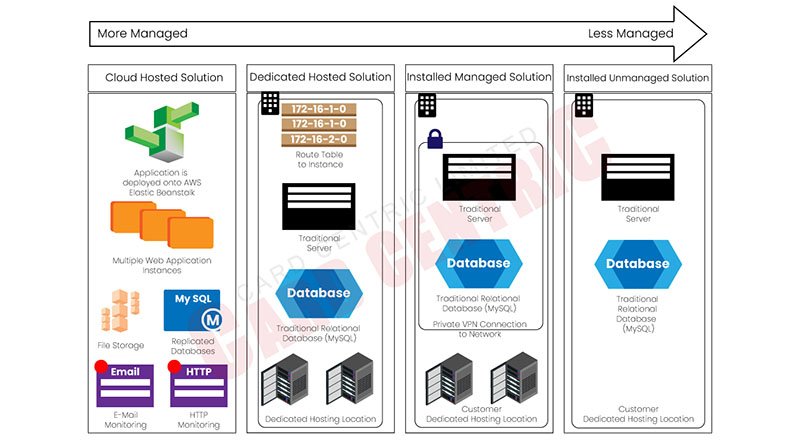In today’s digital age, the ability to manage mobile software and connectivity efficiently is paramount. As technology evolves, so do the demands for more sophisticated, reliable, and flexible solutions to manage SIM cards and the software that drives them. The SIM OTA platform has emerged as a crucial technology in this space, offering unprecedented control, security, and scalability for mobile network operators and service providers. This article explores the transformative power of the SIM platform, its key benefits, and how it is reshaping the landscape of mobile software management.
Understanding the SIM OTA Platform
The term «SIM OTA» stands for SIM Over-the-Air, a technology that allows mobile network operators to remotely manage the data and software on a SIM card. Traditionally, SIM cards were static devices that required physical interaction for updates or changes. However, with the advent of the SIM platform, these updates can now be carried out remotely, without the need for physical access to the SIM card. This capability not only saves time and resources but also enhances the overall user experience by ensuring that mobile services are always up-to-date and secure.
The SIM OTA platform serves as a bridge between the mobile network and the SIM card, enabling operators to push updates, configure settings, and manage subscriptions seamlessly. This remote management is particularly valuable in the context of global connectivity, where SIM cards need to be updated or reconfigured across different regions and networks.
Key Benefits of the SIM OTA Platform
The adoption of the SIM platform offers numerous benefits for mobile network operators, service providers, and end-users alike. These benefits are crucial in maintaining a competitive edge in the fast-paced world of mobile communications.
1. Enhanced Flexibility and Scalability
One of the most significant advantages of the SIM OTA platform is its flexibility. Operators can remotely update and manage SIM cards in bulk, regardless of their location. This capability is essential for operators managing large fleets of SIM cards across various geographies. Whether deploying updates to thousands of devices simultaneously or configuring SIM cards to work on different networks, the SIM platform offers unparalleled scalability.
This flexibility also extends to supporting multiple use cases, such as consumer mobile services, machine-to-machine (M2M) communications, and Internet of Things (IoT) applications. As businesses increasingly adopt IoT solutions, the ability to manage SIM cards across diverse and widespread devices becomes more critical. The SIM OTA platform ensures that these devices remain connected and functional, no matter where they are deployed.
2. Improved Security and Compliance
Security is a top priority in mobile communications, and the SIM OTA platform plays a vital role in safeguarding sensitive data and ensuring compliance with regulatory standards. By enabling secure, over-the-air updates, the platform allows operators to deploy critical security patches and updates promptly. This proactive approach to security helps mitigate risks associated with outdated software, reducing the likelihood of breaches and unauthorized access.
Moreover, the SIM OTA platform supports compliance with industry standards and regulations, ensuring that mobile services adhere to the latest requirements. This is particularly important in industries such as finance and healthcare, where data protection and privacy are paramount.
3. Cost Efficiency and Resource Optimization
The traditional method of updating SIM cards involved significant logistical challenges, including the physical distribution of new SIM cards or the need for users to visit service centers. The SIM OTA platform eliminates these challenges by enabling remote updates, reducing the need for physical interactions and minimizing operational costs.
For mobile network operators, this means significant savings in terms of time, labor, and resources. The ability to remotely manage and update SIM cards also reduces the carbon footprint associated with logistics, contributing to more sustainable operations. Furthermore, the platform’s ability to manage large volumes of SIM cards simultaneously leads to greater resource optimization, allowing operators to focus on enhancing service delivery rather than managing routine updates.
4. Seamless User Experience
End-users benefit directly from the capabilities of the SIM OTA platform. With over-the-air updates, users no longer need to worry about manually updating their SIM cards or visiting service centers for configurations. The SIM OTA platform ensures that users receive the latest updates and configurations automatically, enhancing their overall mobile experience.
This seamless experience is particularly valuable in today’s fast-paced world, where users expect uninterrupted access to services and instant updates. Whether it’s enabling new features, optimizing network settings, or ensuring compatibility with the latest mobile technologies, the SIM OTA platform delivers a hassle-free experience that meets the demands of modern mobile users.
The Role of SIM OTA Platform in IoT and M2M Communications
The Internet of Things (IoT) and Machine-to-Machine (M2M) communications represent the future of connectivity, with billions of devices expected to be connected in the coming years. The SIM OTA platform is central to managing this vast network of devices, ensuring that each SIM card remains functional, secure, and up-to-date.
1. Remote Management of IoT Devices
In the IoT ecosystem, devices are often deployed in remote or hard-to-reach locations, making physical access for updates and maintenance challenging. The SIM OTA platform addresses this challenge by enabling remote management of SIM cards embedded in IoT devices. Operators can push updates, change configurations, and manage subscriptions without the need for physical intervention, ensuring that IoT devices remain operational and secure throughout their lifecycle.
This capability is particularly crucial for industries such as agriculture, logistics, and smart cities, where IoT devices are often spread across vast areas. The SIM OTA platform enables centralized management of these devices, reducing downtime and ensuring consistent performance.
2. Scalability for Massive IoT Deployments
As the number of IoT devices continues to grow, scalability becomes a critical concern for operators. The SIM OTA platform is designed to handle large-scale deployments, enabling operators to manage thousands or even millions of SIM cards simultaneously. This scalability is essential for supporting the massive connectivity demands of the IoT and M2M sectors.
The platform’s ability to manage SIM cards across different networks and regions also ensures that IoT devices remain connected, regardless of their location. This global connectivity is vital for industries such as transportation and logistics, where devices need to function seamlessly across borders.
Embracing the Future with SIM OTA Platform
The SIM platform is not just a tool for managing SIM cards; it is a gateway to the future of mobile communications. As the world becomes more connected, the demand for reliable, secure, and scalable solutions will only increase. The SIM OTA platform is poised to meet this demand, offering mobile network operators and service providers the tools they need to stay ahead in a rapidly changing landscape.
By embracing the SIM OTA platform, operators can unlock new opportunities for innovation, enhance their service offerings, and deliver a superior user experience. The platform’s ability to support diverse use cases, from consumer mobile services to IoT and M2M communications, makes it a versatile and indispensable asset in the digital age.
For those looking to explore the potential of SIM OTA technology further, the OTA platform mobile software management offers a comprehensive solution that combines flexibility, security, and scalability. This platform is designed to meet the evolving needs of mobile network operators, providing them with the tools they need to succeed in a competitive and dynamic market.
Conclusion
The SIM OTA platform is revolutionizing the way mobile network operators and service providers manage their SIM cards and mobile software. By enabling remote updates, enhancing security, and offering unparalleled scalability, the platform is setting new standards for efficiency and user experience in the mobile communications industry.
As the world moves towards greater connectivity, the SIM OTA platform will play a crucial role in ensuring that mobile services remain reliable, secure, and accessible. Whether it’s supporting the growth of the IoT ecosystem, optimizing M2M communications, or enhancing consumer mobile services, the SIM OTA platform is the key to unlocking the full potential of mobile connectivity in the digital age.
Explore how the OTA platform mobile software management can enhance your operations and help you stay ahead in the rapidly evolving world of mobile technology. Embrace the future of connectivity with the SIM OTA platform, and experience the benefits of seamless, secure, and scalable mobile software management.

